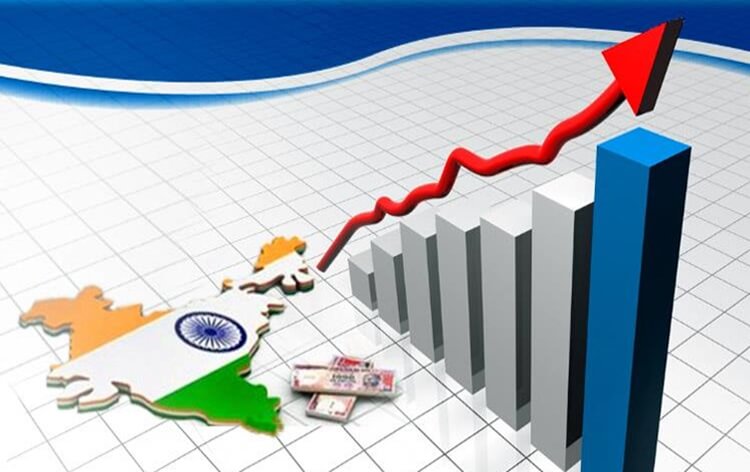Content Attributes
Image Source: Pixabay.
In the July to September quarter of 2023, India’s economy witnessed an incredible surge due to sectors like manufacturing and government spending. And this is also exceeding expectations from some of the biggest publications like Forbes and Reuters.
According to a poll conducted by Reuters, ever since the September quarter, the Indian economy experienced a boost which was even greater than the predicted forecast from Reuters of 6.8%. Even the World Bank’s leading half-yearly Indian economy report says that India was one of the biggest developing economies in FY22/23 at The rate of 7.2%. This ranks India’s growth second among other G20 countries, as well as nearly double the average for upcoming market economies.
And this was all despite certain global challenges, including inflation.
Even as we speak, India’s economy will continue to escalate in the years going forward. But how exactly is India managing to achieve this at a rate that other states can only dream of? Well, that’s what we’re about to disclose right here in this article.
Although it’s difficult to lump all the reforms and policy changes in the last decade, we can at least look into some key differences as to how India can maintain its growth in the years to come.
Factors Behind India’s Strong Economic Growth

After experiencing a strong economic climb in the years 2021 and 2022, India is poised to continue its expansion in 2024 and beyond largely due to private investment and consumption as updated by S&P Global Market intelligence.
Global Offshoring
Since the budding days of the internet, companies from all across the globe Have outsourced services to India like customer service, business process outsourcing as well as software development. But what’s going to be a bigger contributor to India’s economic growth is the introduction of distributed work models and tighter world labor markets.
Ridham Desai, The Chief Equity Strategist for India for Morgan Stanley, has gone on to say that CEOs have become more comfortable working from India since the COVID days. He also states that the number of Indian-employed people who do jobs outside the country is expected to double, looking to reach at least 11 million. That’s because spending on outsourcing is looking to grow from $180 billion a year to approximately $500 billion around 2030.
More Foreign Investments
Chief Indian market economist Upasana Chachra said that multinational firms are even more excited about the idea of investing in India. The government will look to see this happen as it aids in infrastructure investment and also offers land for constructing factories.
Data from Morgan Stanley indicates that the interest in investing in India from multinational companies has reached greater highs than before. India’s GDP share for manufacturing can escalate between 15.6% to 21% around 2031, thereby doubling the export market share of India.
This direct investment from foreign companies is evidence of the Indian economy’s long-term goals due to accelerating incomes of urban housing and a young demographic profile. The projected growth of India’s nominal GDP should grow from $3.5 trillion in 2022 to over $7.3 trillion by 2030, even exceeding that of Japanese GDP, which looks to make India the second-biggest economy in the region of Asia Pacific.
India’s GDP in 2022 had already become more than that of the UK as well as France’s. Research also indicates that India’s GDP could potentially surpass even Germany.
Digital Makeover
India can also anticipate significant growth in digital sectors like online gaming, particularly in popular games such as the Teen Patti card game and mobile esports, within the next decade, effectively transforming the entertainment and gaming market. Consequently, a wave of the world’s leading technological and gaming companies may flock to the Indian capital.
It is expected that over 1.1 billion Indian civilians will have access to the internet, easily doubling the numbers witnessed in 2020. Along with this quick e-commerce expansion, and the shift towards 5G smartphone technology, homegrown unicorn companies will no doubt experience a monumental boom.
Since the inauguration of the national ID program Aadhaar about a decade ago, India has laid the groundwork for a more digital framework. This system is known for creating biometric identification as a way for people to show proof of their residence and has also translated to making financial transactions digital along with other advantages.
Better Financial Markets
India has a better financial market than what it has seen in a long time. And with Chinese opportunities gradually declining, investors are looking for the next best thing, which right now is India.
Credit markets and bank balance sheets are performing and functioning remarkably. This ultimately shows that Indian banks have more value to them than their US counterparts. HDFC Bank now has a $171 billion capitalization which makes it the fourth biggest financial firm on the planet. Even before it merged with its parent HDFC, it was already more valuable and its 29 years of operation than Goldman Sachs’ 154 years of existence.